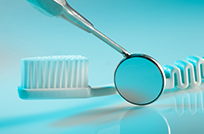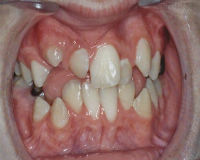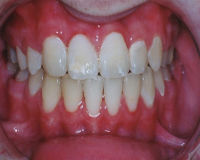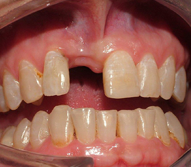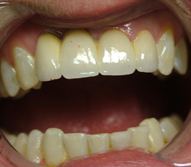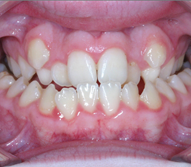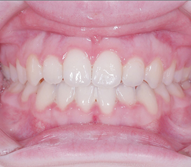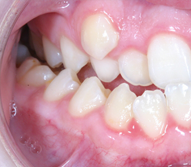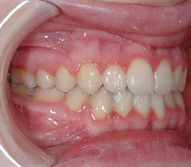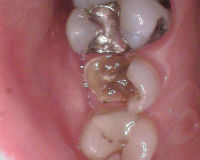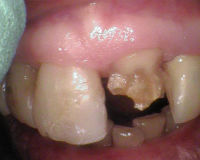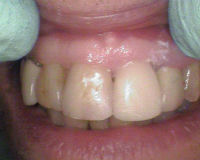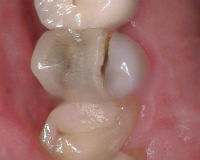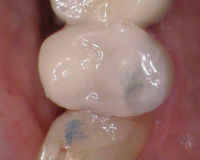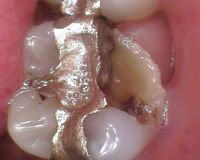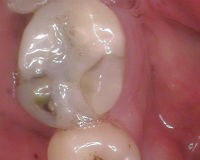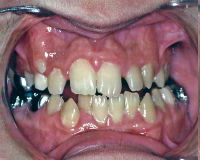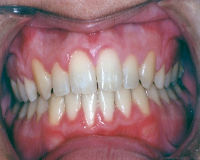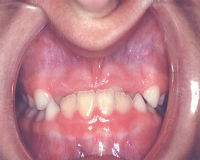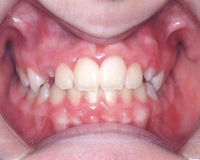All About Braces
In this blog post, we'll be going through everything you need to know about braces! As always, if you have any questions please do not hesitate to contact us.
What Are Braces?
The application of braces is a form of orthodontic treatment designed to correct tooth misalignment. Braces can help to improve a person’s ability to properly bite, improve overall dental health, and increase self-esteem.
Braces can correct a variety of misalignment types including under bites, malocclusions, overbites, deep bites, cross bites, crooked teeth, as well as other teeth and jaw related issues.
Tooth misalignment can do more than just impact the aesthetics of your smile; it can also have a negative effect on your bite and overall comfort. If you are in need of orthodontic care, our board certified Newmarket orthodontic specialist will take the time to thoroughly evaluate the state of your teeth, as well as recommend solutions designed to bring you results.
Who Needs Braces?
Tooth misalignment can be caused by a number of issues. These include, but are not limited to, injury, tooth loss, thumb sucking, and genetics.
If you have been burdened with misaligned teeth, your dentist may recommend that you receive braces as treatment.
Orthodontics for Children & Teens
Abnormalities in tooth growth usually develop between the ages of six and twelve; however, child orthodontic treatment is unlikely to begin until the child is at least nine years old. Having your child’s misaligned teeth treated during youth, can improve their self-confidence, and lessen the chances that they will have more severe dental issues later in life.
Orthodontics for Adults
While children typically receive traditional orthodontic treatment through, dentists may also suggest braces as a solution for adults with orthodontic concerns. As orthodontic technology has advanced, there are now many orthodontic options for adults who want to straighten their teeth more discreetly.
While most severe issues are addressed in youth, you can receive orthodontic treatment at any age.
How Do Braces Work?
Straightening teeth can be accomplished in many different ways. However, various types of braces function in slightly different ways. Traditional braces work to align teeth through the application of wires, which are bracketed to misaligned teeth, and apply constant pressure over time. As teeth begin to shift into the desired position, an orthodontist re-tightens the braces to continue the shift.
What Are The Different Types of Braces?
Metal Braces
Metal braces are also considered ‘traditional braces’, yet are much less noticeable than they were in the past. These braces use metal brackets and wires to pull teeth into their desired position, and are considered the least expensive type of braces.

Ceramic Braces
Ceramic braces are both the same size and shape as traditional metal braces; however, ceramic braces appear clear or ‘tooth-coloured’ and therefore appear more natural looking. Like metal braces, ceramic braces use pressure to push teeth into place.

Damon Braces
Damon braces are fitted in the same way as traditional braces, but instead of having brackets that need manual tightening, use a memory wire slide mechanism which moves naturally as teeth align. This method is desirable as it uses less force than traditional braces and appears clear.
Lingual Braces
Lingual braces function the same as traditional metal braces, except that the brackets are applied on the inside of teeth. While these braces can be difficult to clean, and are not the right solution in many cases, those who don’t want their braces to be seen prefer lingual braces.
What Are Invisalign Invisible Braces?
Invisalign is an alternative alignment treatment to traditional braces. This process involves the application of custom-fit plastic aligners, which fit into the mouth like a mouth-guard. Clear and removable, Invisalign is one of the most popular brace types for adults who want to straighten teeth slightly and discreetly.
It is important to note that Invisalign cannot provide serious dental work and is therefore not the right solution for many individuals seeking orthodontic care. Invisalign is also a more expensive form of treatment and does not treat misalignment as quickly as traditional braces.
For more information visit our Invisalign Invisible Braces page.

How Long Will I Have To Wear Braces?
Treatment plans vary on a case-by-case basis. However, most people receive treatment for one to three years. Removal is followed by a period of wearing a retainer mouthpiece, which solidifies the new, straight, positioning of the teeth. Book a consultation with our certified orthodontist to discover what your personal treatment plan will look like.
What Can Happen If Orthodontic Problems Go Untreated?
Tooth Decay
Tooth decay refers to the deconstruction of tooth enamel, often caused by consumed sugars and the acids that exist in plaque bacteria. Tooth decay can be unattractive, painful, and if untreated, can lead to tooth loss.
Gum Disease
Periodontal disease or ‘gum disease’ ranges from gum inflammation to major soft tissue and bone damage. Gum disease occurs when bacteria in the mouth builds up and causes irritation to the gums, which surround our teeth. These inflamed gums then begin to move away from our teeth, creating a gap in which infection below the gum line can develop. As our bodies work to fight off these infections, the connective tissue, as well as bone, begins to breakdown. In severe cases, gum disease can cause teeth to fall out.
Bone Deconstruction
Bone deconstruction can occur as the body works to fight off infection that has penetrated below the gum line. Rapid deconstruction of supporting tooth structures such as tissue and bone can cause a number of issues including circumferential, interdental, horizontal, vertical, and other forms of bone defect.
Temporomandibular Joint Problems
Temporomandibular disorder (TMD) can cause severe pain in both your jaw’s joints and in the muscles that support jaw movement. The temporomandibular joint is a hinge that connects your jaw to the temporal bones of your skull, therefore allowing your jaw to move up and down, side to side. When orthodontic issues go untreated, this joint can develop painful clicking, popping, cause teeth grinding, and make talking and eating painful.
Chipping
Teeth that are misaligned are more vulnerable to chipping. A tooth can chip due to biting on something hard, being hit in the face or mouth, falling, or having weak teeth due to other dental issues. While a slightly chipped tooth may not hurt, a tooth that is severely chipped can cause intense nerve pain and damage. You can reduce your risk of chipping a tooth by regularly visiting the dentist and having misaligned teeth treated with braces.
The Benefits of Getting Braces
Straightens Teeth
Tooth misalignment can do more than just impact the aesthetics of your smile; it can also have a negative effect on your bite and overall comfort.
Improves Appearance
Orthodontics has been credited for dramatic improvements in the careers and personal relationships of millions of people in Canada and the United States of America.
Helps to Maintain General Health
Braces will improve the health of teeth, gums, and jaw joints.
Saves You Money In the Long Run
Braces reduce the need for more costly dental work in the future.
Improves Self-Esteem
Straightened teeth improve appearance and self-confidence

How Costly Are Braces?
While braces may be considered expensive, we at 404 Dental believe that orthodontic treatments are an investment against the cost of more serious problems associated with remaining untreated.
Orthodontic treatment can bring long-term health benefits and lessen the risk of more serious dental concerns later in life.
Fees
Treatment fees vary widely, depending on the severity of the problem, the complexity of treatment, and length of treatment.
Payment Planning
Generally, fees may be paid over the course of treatment. Call us to learn more about our payment planning options.
Ontario Health Insurance Plan
While some health insurance plans cover dental, others do not. If your provider does cover dental, be sure to investigate restrictions, as many plans only cover a percentage of the cost, and only up until a certain age (for dependents).
Plan Ahead
Braces can be costly. However, dentists generally are able to identify if a child will need braces a few years before they receive them. Budgeting and saving for this service is highly recommended.

Do Braces Hurt?
Modern braces are much more comfortable and efficient than braces of the past. New technology applies a gentle and constant force, moving teeth with less strain and requiring less frequent adjustments over time.
While some discomfort should be expected, the benefits of braces strongly outweigh all cons.
How 404 Dental Can Help
404 Dental combines Orthodontic practice with general dentistry to allow for efficient communication and scheduling between services. We collaborate our specialties to provide not only the best service but also the best approach to patient care.
As your trusted and certified Newmarket orthodontist, Dr. Greg and his team can improve your smile, correct bite discrepancies, and help to prevent other dental issues aggravated by misaligned teeth.
Contact us today to start your journey towards a more beautiful smile.


